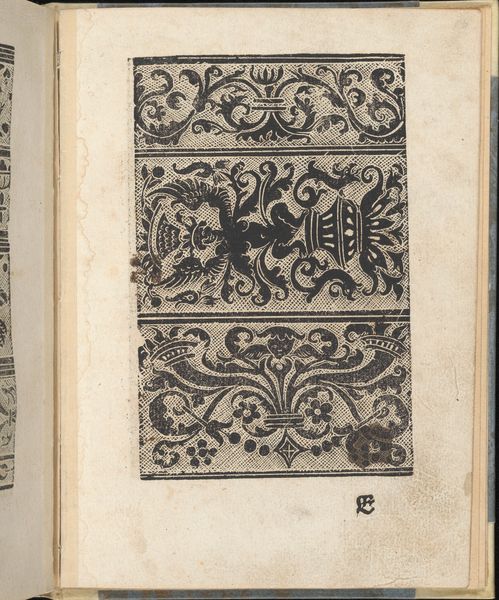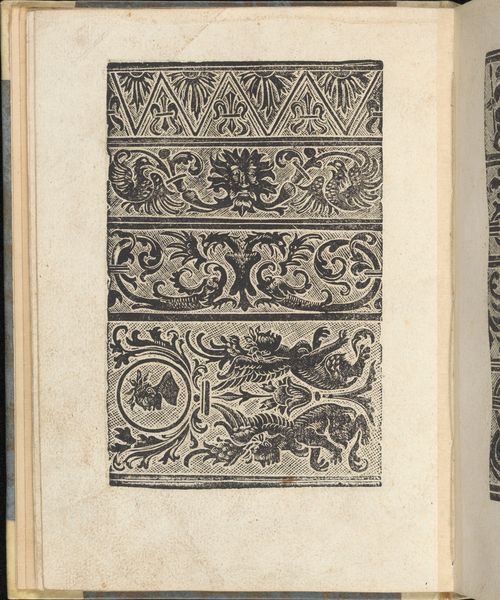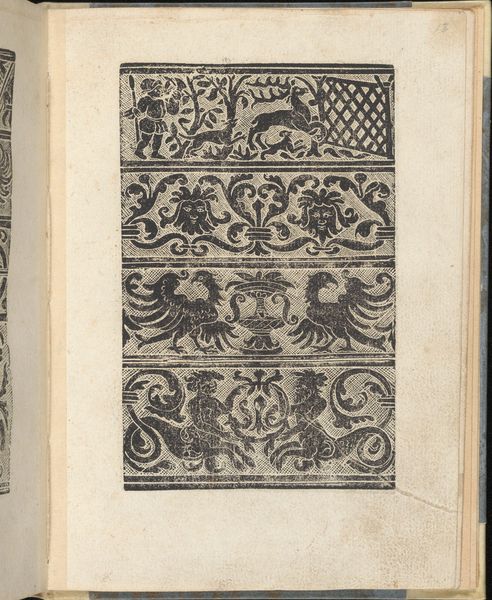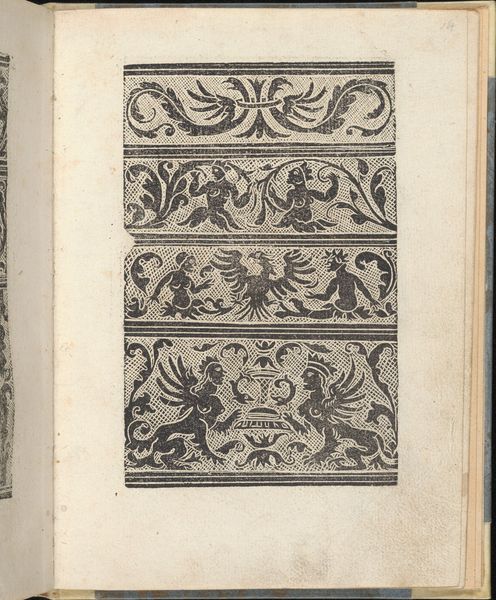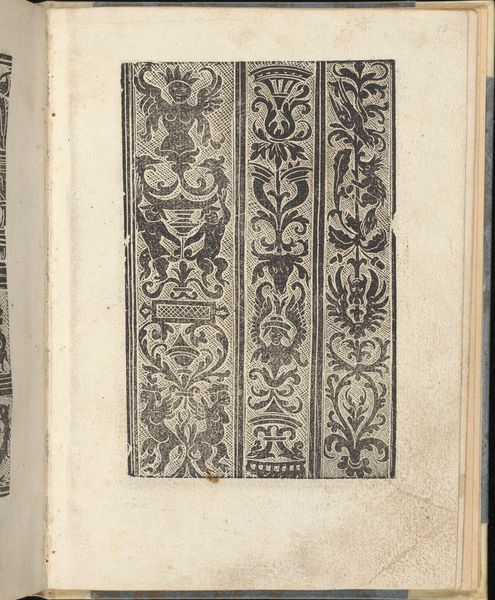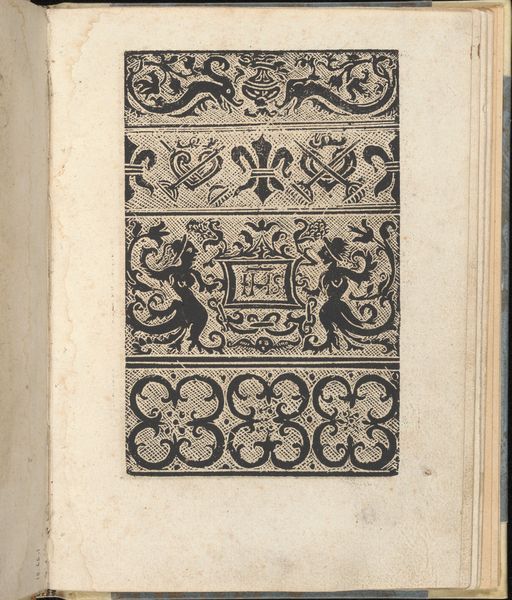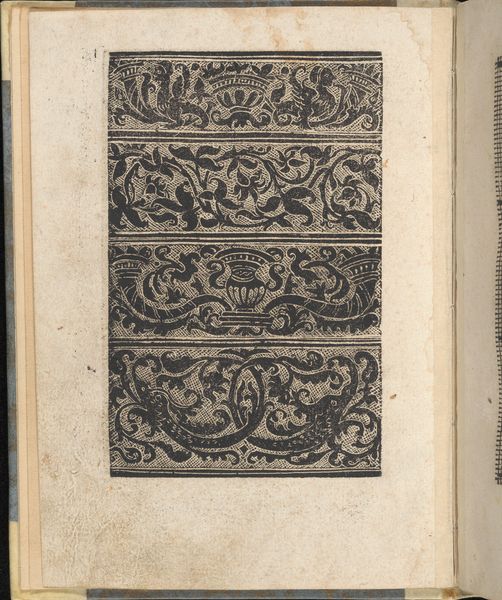
Ein ney Furmbüchlein, Page 17, verso 1520 - 1530
0:00
0:00
drawing, print, woodcut
#
drawing
# print
#
11_renaissance
#
woodcut
#
decorative-art
Dimensions: Other: 7 7/8 x 6 1/8 in. (20 x 15.5 cm)
Copyright: Public Domain
Curator: This image showcases "Ein ney Furmbüchlein, Page 17, verso," a woodcut created around 1520-1530 by Johann Schönsperger the Younger. It's part of a book, essentially a pattern book, residing at the Metropolitan Museum of Art. Editor: Oh, look at that! My initial thought? Quiet intensity. There's a kind of understated power in these precise, repeating patterns, like a hushed conversation among ancient symbols. Curator: Absolutely! Notice the compartmentalization; the page is divided into horizontal bands, each showcasing unique ornamental motifs. Consider the material and production itself, though. Each image in this book, made from a woodcut print, had the intention of providing a pattern for craftsmen to learn, imitate, and elaborate upon. Editor: The repetitive nature is interesting. There is the obvious sense of imposed organization but there are subtle asymmetries and imperfections. They prevent the composition from feeling rigid, I think. The patterns ripple with almost organic forms; intertwining vines and stylized flowers – very decorative. Curator: I see what you mean! Zooming in further, one notes how the dark, bold lines create a strong contrast against the paper, defining the intricacies of the designs, and thus accentuating the complexity. I suspect this contributes to its function as inspiration for craftsmen and designers seeking fresh ideas for their own work. Editor: Thinking about design books as a whole – like, visual idea catalogs, ready for artists' adaptations – what if this served less as a strict template and more as a suggestion box of shapes, waiting for the spark of someone else’s imagination? Like here are a couple vines; now it is your task to tell the garden's story, eh? Curator: I love that image! Indeed, "Ein ney Furmbüchlein" epitomizes the transitional period of the Renaissance, with one foot in a highly ornamental past and one reaching into a new visual paradigm for modern craft production. Editor: Seeing these repeated designs, it strikes me that it’s as much a philosophical reflection on creation itself as it is a guide. Forms echo and evolve and take on this quiet life of their own!
Comments
No comments
Be the first to comment and join the conversation on the ultimate creative platform.
